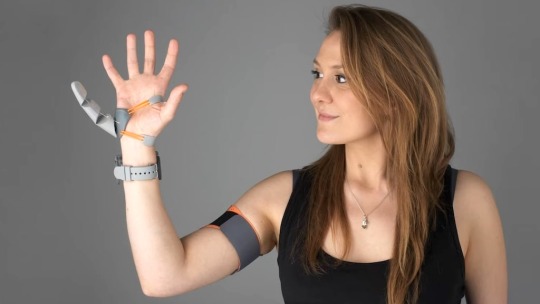#dani clode
Text
POČINJE TEHNOLOŠKA NADOGRADNJA LJUDSKOG TIJELA: ‘Možda vam treba dodatna ruka da miješate juhu dok sjeckate povrće’

HOMO CYBERNETICUS
Robotski dijelovi na ljudskom tijelu nadohvat su ruke, tvrde znanstvenici. Dodaci od palca do ruke mogli bi biti dizajnirani da pomognu u jačanju naših sposobnosti.
Bilo da je riječ o brizi o djeci, operaciji pacijenta ili kuhanju nedjeljnog ručka, postoje mnoge prilike kada bi nam dodatni par ruku dobro došao.
Tamar Makin, profesorica kognitivne neuroznanosti na MRC jedinici za kogniciju i mozak na Sveučilištu Cambridge (UK), tvrdi da bi takav pristup mogao povećati produktivnost: “Ako želite dodatnu ruku dok kuhate u kuhinji kako biste mogli miješati juhu dok sjeckate povrće, možda imate opciju da nosite i samostalno upravljate dodatnom robotskom rukom”.
Takav pristup ima svoje prednosti. Dani Clode, dizajner sa Sveučilišta Cambridge, već je stvorio 3D isprintan palac koji se može dodati bilo kojoj ruci. Clode će raspravljati o uređaju kao dijelu panela na temu “Homo cyberneticus: motoričko povećanje za buduće tijelo” na godišnjem sastanku Američke udruge za napredak znanosti (AAAS) u Washingtonu (DC, SAD) u petak.
Makin tvrdi da bi dodatni palac mogao biti od pomoći konobarima koji drže tanjure ili inženjerima elektrotehnike prilikom lemljenja, na primjer, a drugi robotski dijelovi tijela mogu biti dizajnirani za posebne potrebe na radnom mjestu. Dodatna ruka mogla bi pomoći graditelju da zabije čavao dok drži gredu na mjestu.
“Razgovarali smo s kirurgom koji je zaista bio zainteresiran za držanje svoje kamere dok radi operaciju ramena, umjesto da to mora činiti njegov asistent. Želio je imati potpunu kontrolu nad alatima kojima se koristi dvjema rukama dok istodobno mora držati kameru i manipulirati njome”, dodaje Makin.
U budućnosti bismo tako mogli dobiti cijele dodatne ruke, naočale koje poboljšavaju vid i druga robotska poboljšanja koja bi nas mogla učiniti jačima i bržima. Na koncu bi opremanje takvog uređaja moglo postati trivijalno poput stavljanja naočala.
Ideja o kiborzima nije novost
Kiborg (eng. cyborg) je naziv za biće koje kombinira biološke i mehaničke komponente. To može biti ljudsko biće koje je modificirano umjetnim dodacima, poput umjetnih udova, elektroničkih senzora, implantata ili drugih tehnoloških nadogradnji.
Kiborzi također mogu biti stvoreni umjetnom inteligencijom i robotikom, koji se koriste za poboljšanje ljudskih sposobnosti ili stvaranje potpuno novih vrsta hibridnih bića.
Koncept kiborga se često povezuje s futurističkim tehnologijama i znanstvenom fantastikom, ali već postoje primjeri kiborg tehnologije u medicini i drugim područjima koji pomažu ljudima u njihovim svakodnevnim životima.
Ideja o kiborgu može se pratiti unatrag kroz povijest, ali moderni se koncept razvio tijekom 20. st. Sâm pojam 1960-tih su godina skovali američki izumitelj Manfred Clynes (1925.-2020.) i britanski psiholog Nathan S. Kline (1916.-1983.) kako bi opisali bića koja su kombinacija bioloških i mehaničkih komponenti.
Koncept kiborga i ideja o poboljšanju ljudskih sposobnosti putem tehnologije često su se pojavljivali u znanstvenoj fantastici, filmovima i književnosti. Primjerice, roman “The Six Million Dollar Man”, koji je kasnije adaptiran u popularnu TV seriju 1970-ih, prikazuje bivšeg astronauta koji je nakon nesreće postao kiborg sa superiornim sposobnostima.
Čini se da je znanstvena fantastika postaje naša realnost. Ali, ni to ne bi bilo prvi put.
Dnevno.hr
Photo by Pavel Danilyuk
Read the full article
0 notes
Photo
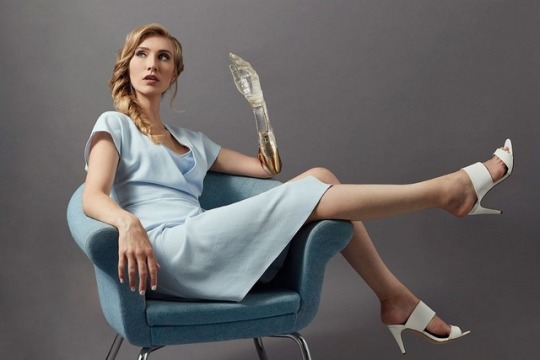

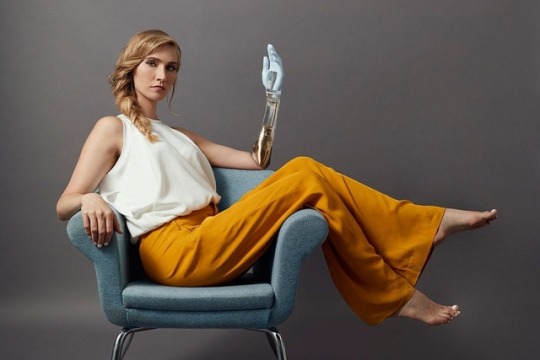
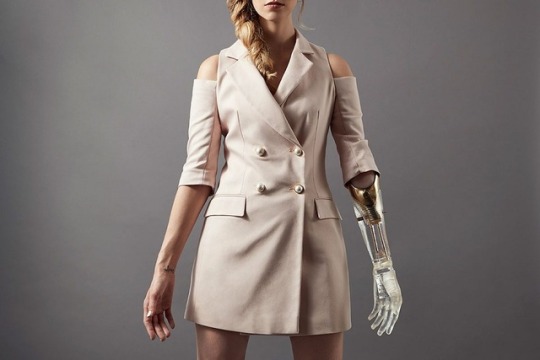
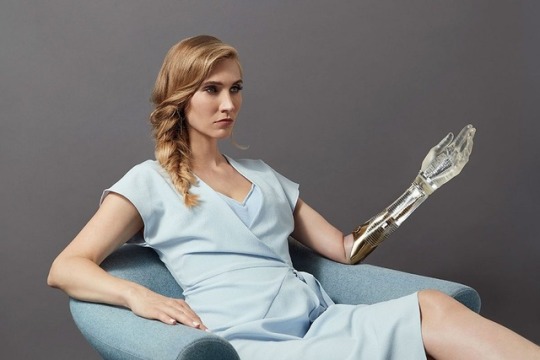
Alternative Limb Project: Synchronised
Made by Sophie de Oliveira Barata and Dani Clode for Kelly Knox, photo by Omkaar Kotedia
The internal electronics take a reading of her pulse, and the wrist then ticks in time to her heartbeat. It can continue to tick even when she is not wearing the arm. It comes with two possible hands, in clear and blue resin.
#fashion#alternative limb project#the alternative limb project#prosthetics#sophie de oliveira barata#dani clode
887 notes
·
View notes
Photo

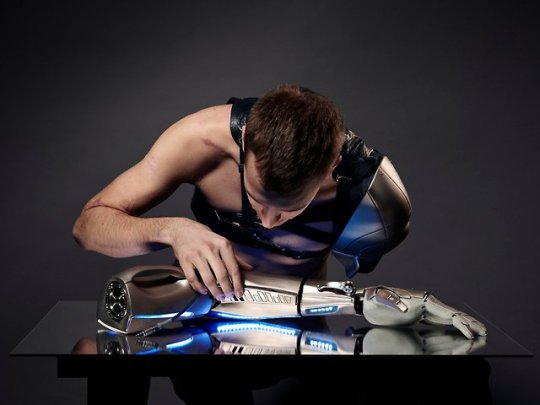
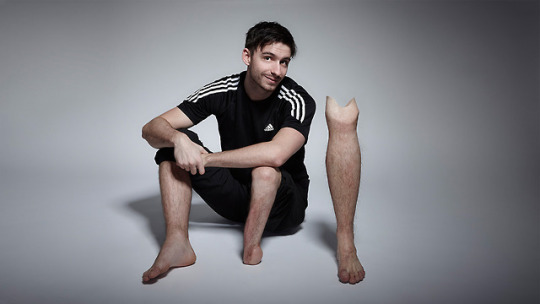
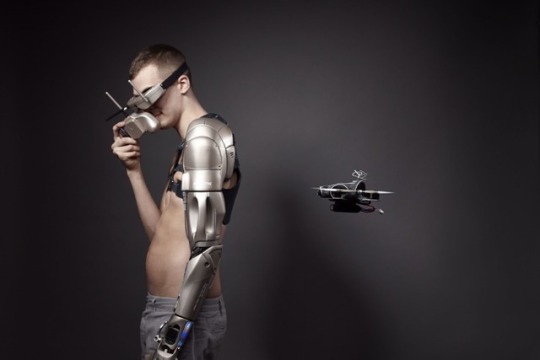


Sophie de Oliveira Barata, “The Alternative Limb Project,”
Sophie de Oliveira Barata specializes in making prosthetics for the move industry.
With that experience she has added a new flair to prosthetic limbs elevating them from a simple utilitarian design to works of art.
Photos by Omkaar Kotedia, Courtesy of the Alternative Limb Project &
Nadar Kander for the New york Times
#art#design#limb#prosthetics#sophie de olivera barata#dani clode#jason taylor#kelly knox#botanical#bionic#human rights#james young#ryan seary#grace mandeville#nadar kander#omkaar kotedia#legs#fingers#arms#equal rights
880 notes
·
View notes
Photo

The Alternative Limb Project, “The Arm With Interchangeable Elements,”
A collaborative design by Sophie de Oliveira Barata, Dani Clode & Jason Taylor
For Kelly Knox
Photography by Simon Clemenger
The Alternative Limb Project, 2017
#art#design#prosthetics#prosthesis#arms#sophie de olivera barata#kelly knox#jason taylor#dani clode#simon clemenger#elements#interchangeable#the alternative limb project#poetry#abstracart#equality#human rights#future#handicap
10 notes
·
View notes
Photo

Third Thumb
We often ask for another pair of hands, but what would you do with an extra thumb? For a human to gain a useful appendage, we rely not only on technology, but also on our brain’s ability to learn and adapt. By adding a 3D-printed prosthetic to the hand of able-bodied volunteers and a quick training session, participants effectively carried out dexterous tasks like stirring coffee whilst holding the cup with the same hand. Impressive – but what’s going on in their brains? Volunteers quickly adapted to a new digit and used it without thinking about it, but scans revealed that the brain’s representation of fingers changed, with less of a distinction between them. Whether prosthetics like these were replacing lost function, or were an extension to our bodies, this shows how quickly our brains could adapt to future prosthetic technologies, but we must also consider their impact on the brain.
Written by Sophie Arthur
Image by Dani Clode
Institute of Cognitive Neuroscience, University College London, Queen Square, UK
Image copyright held by the original authors
Research by Paulina Kieliba and colleagues, published in Science Robotics, May 2021
You can also follow BPoD on Instagram, Twitter and Facebook
134 notes
·
View notes
Video
Did you know 😏 that there is a possibility for humans 👲👱 to have more than five ✋ fingers? Of course you can do that by adding a 3d printed prosthetic thumb 👍 . This particular project was carried out by Dani Clode (MA Design Products), Royal College of Art.
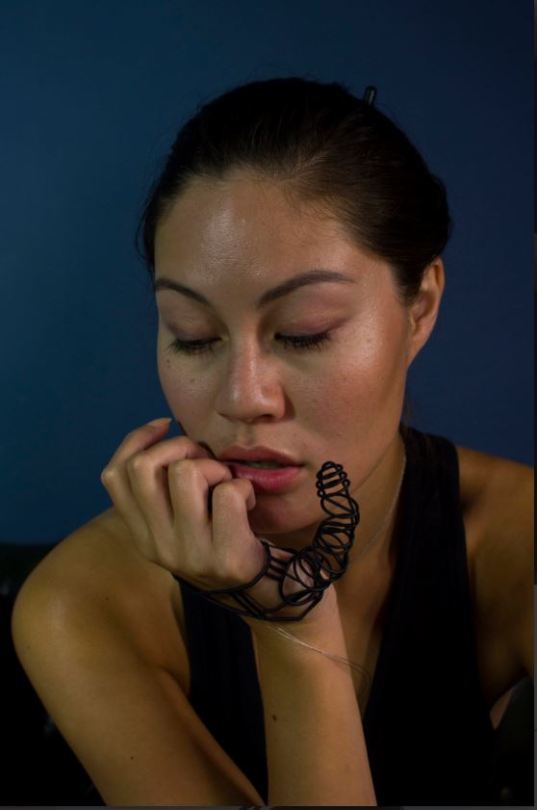
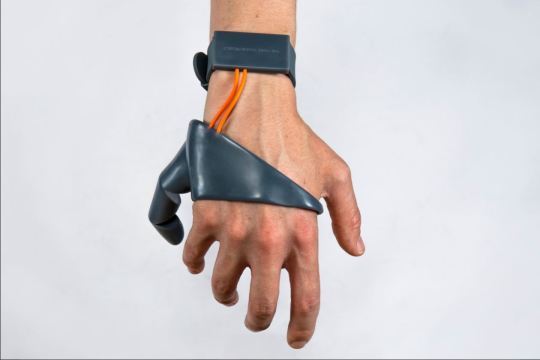

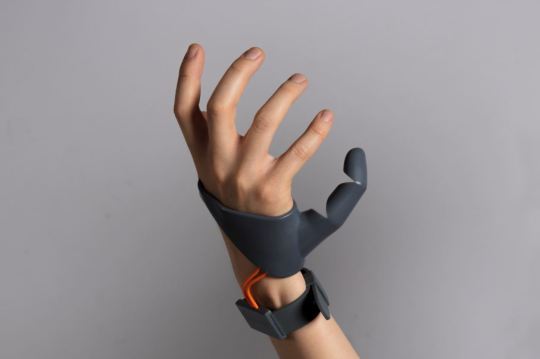
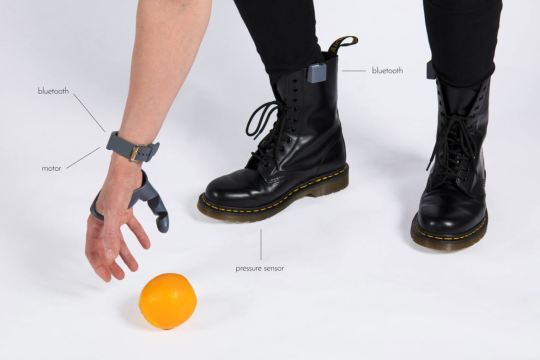

Follow Twitter || Instagram || Tumblr
#thumb#thumbs up#fingers#3d#printed#prosthetics#dani#clode#royal#college#of#arts#hands#biology#engineering#biomedical#design#bioengr#awards#2017
18 notes
·
View notes
Link
2 notes
·
View notes
Text
“I made the first pair of parasitic leg prostheses for a conference in Bergen in 2015. These looked like legs that branch from two to four down from the knees. The impression is somewhat similar to the multiple hands of Indian goddesses, or to Scylla’s dog heads in the Odyssey. The only purpose of parasitic prostheses was to make me able to wear very high heels, but I also imagined how robotic versions would make me dance. As if by chance, on the first day of the event there was much talk about how the idea of restoring something missing is old-fashioned in a time when perceptions of the body are expanding rapidly.
“We are already giving up the assumption that the number of human limbs is unconditional. New technological lumps are popping up from our hands and heads. In the children’s book, Babar the elephant lifts a teacup charmingly with his trunk. My friend dreams of a tail that enables her to pull her kids closer in the street when her hands are full of grocery bags, or to lift stuff from high shelves. My son would like to have four arms and legs like da Vinci’s Vitruvian man, as seen on our toilet seat cover. If the weight of the body gets re-distributed in the future from two limbs onto four or even more, walking becomes softer and more swinging. The classic image in which a monkey transforms from picture to picture into a human in standing position will acquire a new evolutionary stage—a rocking human.
“I predict that it is only a matter of time until parasitic prostheses become fashion. Who would not want to browse social media with parasitic hands while cooking, or to be able to both knit and bite one’s nails while watching a horror movie? Pet three, four, five cats at the same time? This increase in limbs will affect the fashion industry, since we need clothes with more sleeves and legs, as well as single, unpaired shoes and gloves. Dani Clode already has a “third thumb” project, where the thumb acquires another, 3D printed, pair below the little finger on the side of the palm.”
Jenni-Juulia Wallinheimo-Heimonen in https://tidsskrift.dk/KKF/issue/view/8124/1462
12 notes
·
View notes
Photo

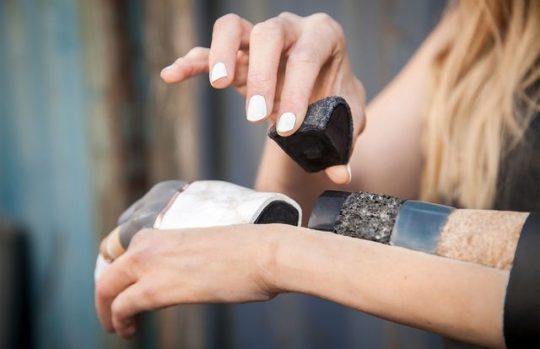
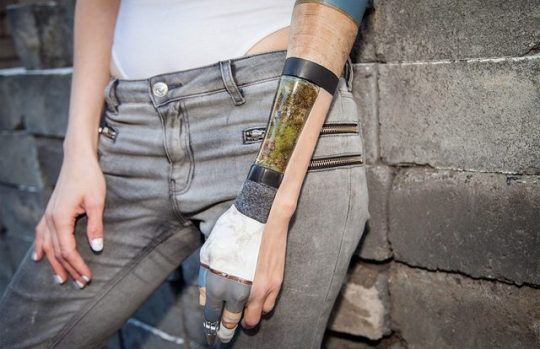

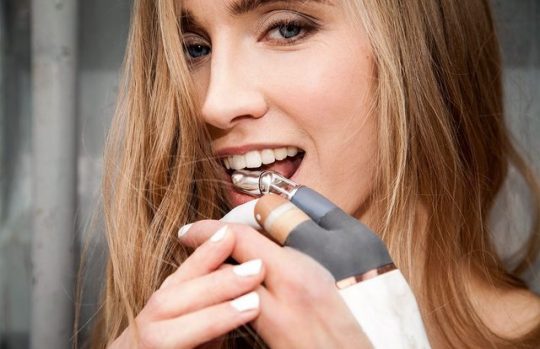



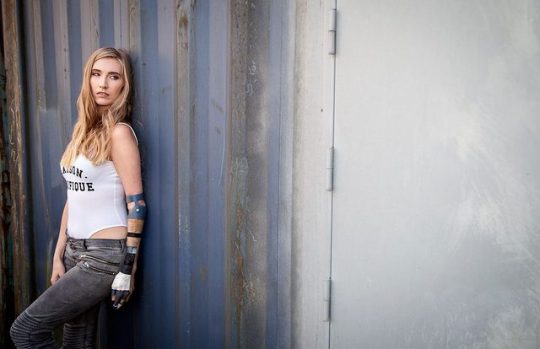
“Materialize” by The Alternative Limb Project
The arm with interchangeable elements
A collaborative design by Sophie de Oliveira Barata, Dani Clode & Jason Taylor
For Kelly Knox
Photography by Simon Clemenger
The Alternative Limb Project, 2017
The Materialise arm comes in two halves: the underside is highly realistic, expertly crafted in skin-like-silicone skin side, to represent Kelly’s physical body; the upper half is designed with interchangeable sections, each of which represent various elements, reflecting her emotional and spiritual self.
The arm was created by a combination of 3D printing, CNC routing, hand carving and sculpting, using steel, rock, earth, wood, moss, oil, cork, wool, bronze, rhodium and gold. The two halves of the arm form a strong visual connection between the physical and metaphysical.
482 notes
·
View notes
Text
6 parmağınız olsun ister misiniz?
New Post has been published on http://www.teknovezir.com/manset/6-parmaginiz-olsun-ister-misiniz.html
6 parmağınız olsun ister misiniz?
Adeta bilim kurgu filmlerinden fırlamış bir giyilebilir Teknoloji ürünü ile karşı karşıyayız. İlk bakışta tuhaf gelebilir ancak Third Thumb adlı 3 boyutlu basılmış protez aslında oldukça işlevsel olmasıyla şaşırtıyor.
Kan emici giyilebilir cihaz!
Diyabet hastalarını önemli bir dertten kurtarmak üzere geliştirilen e-Mosquito, küçük ısırıklarla…
Third Thumb ile daha yetenekli eller!
Royal College of Art mezunu Dani Clode tarafından hayata geçirilen Third Thumb Projesi ile işlevsel bir üçüncü protez baş parmak tasarlanmış. Ürünü kullananların yetenekleri genişlerken, sunulan hareket çeşitliliği ise gerçekten şaşırtıcı.
İki küçük motordan gücünü alan ve ayakkabıyla bütünleşik basınç sensörü aracılığıyla ayak ile kontrolü sağlanan protez ellerinizle yapabileceğiniz şeyleri çoğaltıyor. Bu noktada kullanımın otomobildeki pedal mantığına benzediğini belirtmekte gerek. 3 boyutlu parçaların bisiklet frenlerindekine benzer Bowden kablo sistemi ile bağlandığı ve farklı el boyutları için özelleştirilmiş tasarımlar yapılabileceği ifade ediliyor.
Third Thumb tasarımcısının hedefi ise, protezlerle ilgili algıları yıkmak ve engelleri düzeltmek yerine yetenekleri genişletmeye odaklanılmasına dikkat çekmek. Daha fazla motor geliştirmelerine ihtiyaç duyduğu belirtilen proje bakalım ileride yaygınlaşabilecek mi?
:: Third Thumb Projesi hakkında ne düşünüyorsunuz?
SDN
#3 boyutlu basılmış protez#3 boyutlu baskı#dani clode#giyilebilir#giyilebilir teknoloji#protez#third thumv
0 notes
Video
vimeo
The Third Thumb Project
Designer Dani Clode's Third Thumb is a 3D printed robotic prosthetic thumb that goes on the pinky side of your hand, created a motorized, opposable additional thumb that you can use to play the guitar, pick up objects, or crack an egg.
Clode proposes that her thumb can be styled as a piece of jewelry or as a tool, depending on the materials used and the system's programming.
The working prototype is the base model for the design. The project includes two potential aesthetic territories for the Third Thumb. The first is a tool aesthetic with an electronic element, inspired visually by a cross between a watch, a power tool and a fitness tracker. As a functional piece, this Tool Third Thumb would be 3d printed in a multi-shore 3d print, ranging from a soft flexible print of the thumb, to a more rigid shore towards structural points needed on the hand. The second aesthetic exploration is a kinetic jewellery Third Thumb inspired by another form of body modification expression, tattoo. The design is created with form lines from the working model, and is functional, but purely aesthetic. It is a mix of two types of 3d printed materials, the main body structure is a rigid 3d printed black formlabs resin, and the connecting lines on the joins are flexible, recreating the movement of the thumb.
The Third Thumb aims to challenge the perception of prosthetics. By extending the body I see it creating a similar trajectory for prosthetics as glasses or plastic surgery. Creating a shift from medical device to positive body image statement. Success is widespread social engagement with The Third Thumb, from a jewellery designer, to a falcon handler, to a tattoo artist, to a toddler, the more people who experience it, the better, framing it in different functions and aesthetics. The current Third Thumb design as a starting base for a lot of future adaption of aesthetic. The value of the Third Thumb is to create a catalyst for society to consider human extension, framed in an approachable, accessible design. It is a tool, an experience, and a form of self-expression. When we start to extend our abilities, and when we reframe prosthetics as extensions, then we start to shift the focus from ‘fixing’ disability, to extending ability. [bb]
#connected technology#technology#3d printing#vimeo#the third thumb#third thumb#prosthetics#dani clode#opposable thumb#thumb#design
0 notes
Photo

ダニ・クロードがRCAの卒業制作として披露した、自由に動かせる義指 (dezeen)
Controllable Third Thumb lets wearers extend their natural abilities (dezeen)
0 notes
Video
This was created by Dani Clode, a grad student at London’s Royal College of Art (RCA). Here’s the video source
4K notes
·
View notes
Text
Talking to Alice Stewart about vibrators, education and working between the physical and the digital
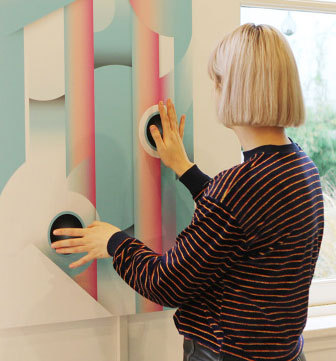
Creative technologist, designer and all-round amazing human Alice Stewart works between London and Amsterdam, as an educator, artist and researcher. In March 2019, as Touchy-Feely Tech she joins us in Berlin for the Build-Your-Own-Vibrator workshop, an introduction to electronics, hardware and customisable pleasure. We are pleased to also announce, that she will be joining us in the summer for the Physical Computing for Beginners program, between the 1-26 July 2019. We spoke to her about vibrators, education, tech and being a human which crosses over all these topics today.
Tell me a bit about Touchy-Feely Tech. How did that start out and what does it encompass?
Touchy-Feely Tech came about because I thought it was a nice idea to sound more like an organisation when running workshops and doing commercial projects. It is the team of myself, and Dani Clode, who is an amazing product designer and researcher who has designed the cases for the DIY Vibrators. What it encompasses is in the name - tech that is a little softer, romantic, curious - but also I liked that we could play with the negative connotations of ‘Touchy-Feely’ and reclaim the phrase into something nice. I love hardware and think that it’s such a unique artistic expression, and want to share this sentiment with everyone - I guess it starts with the name!
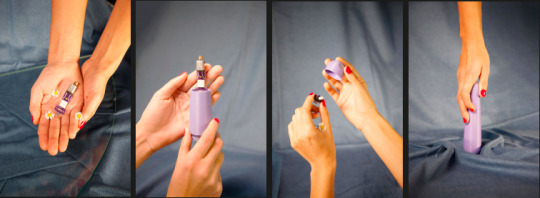
“Making your own stuff in general increases the intimacy we share with our possessions”
Why vibrators as a DIY project?
Vibrators are really interesting objects to me, they are sort of neutral objects. They are very specific in their purpose, but can come in all shapes, sizes and colours. They are also so taboo, they aren’t meant to be handled in public - but interestingly if you make your own, in a group of people, this taboo disappears. If you make a ‘controversial’ object from scratch, it feels safer and less alienating. I think making your own stuff in general increases the intimacy we share with our possessions. What object is more intimate than a vibrator? I like the idea of DIY educational projects ending with an outcome you can actually use, rather than something you will throw away. I hope that after crafting such a personal item and engaging with it on a few different levels, people will cherish it a bit more than a radio or a blinking LED.
What's attractive about using Arduino for this purpose?
It’s a great way to introduce people to programming, and Arduino as a platform embodies similar values to the DIY Vibrator workshops - like access to information, demystification, and having a good time!
What's your favourite aspect of these sorts of workshops?
The fact that the workshops and the project in general resonate with people is so motivating. When people feel proud of themselves for making something it feels great to have helped enable that. Aside from this, I have really love art directing the workshops, like designing the worksheets and collaborating with friends to create the visual identity.
Your practice encompasses design, art and tech very much in the context of education. What does this afford to your practice, and your own ambitions?
Most of my work involves some type of education or demystification of a subject or theme. Usually I learn something and immediately want to share it - I try to put that special kind of positive energy that you feel when you understand something new (however small it might be) into the making of a new project and I hope that people feel that come across when they experience whatever it is. I think I enjoy learning the basics of a lot of different things, rather than sticking with something for longer and becoming a master. It keeps things moving forward!
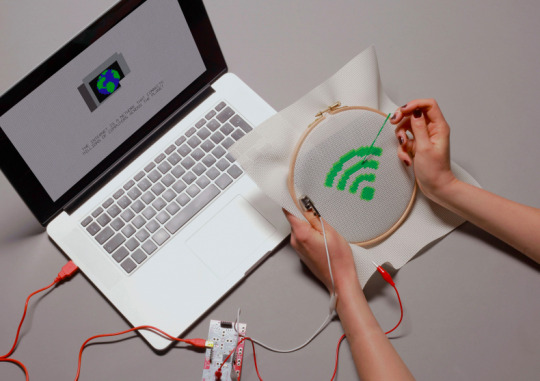
image credit: Alice Stewart, “Digital Cross Stitch”
Many of your works position themselves between the physical and the virtual. Digital Cross Stitch, for example, turns the hoop into the controller. Can you talk about how you perceive physicality / virtuality today?
I like to sit on the fence between analog and digital, which explains why I am really into physical computing. I think there are so many analog analogies to explain digital things, which I suppose is how I perceive more complex virtual topics. I think there’s no point in taking a side, but it’s about how analog and digital can work together to create endless possibilities.
Can we talk a bit about physical computing? Have you always been attracted to crossing over with technology? Do you find it a reflection of our times, and if so - how you see the future of its development?
Physical computing doesn’t feel contemporary to me - the fact that it’s been made accessible is a really contemporary idea but aside from that, we’re working with pretty historic components. I have always been interested in making physical ‘stuff’, and to enhance that stuff with electronics and code is still really exciting to me. I am not sure of the future of it. I can see why people are still interested in hardware, in the way that people are still interested in hand-weaving and knitting. For the future, beyond things like implementing IoT and more complex software stuff, I am not sure know how the hardware will develop. Maybe the tech will get smaller, we will be able to make DIY-biohacking projects, and batteries will evolve to become even tinier.

image credit: Dani Clode, “The Third Thumb”
“The fact that something a designer/artist created is now being used in medical research that will eventually become part of history is incredible.”
How can we begin to apply it in our practices, whether for the purpose of research, academic or artistic work? Can you think of any examples of how your students have applied it in the past?
It can be applied pretty much everywhere! Physical computing is an amazing prototyping tool. I’d like to mention Dani’s Third Thumb project which she prototyped with Arduino and some code-less physical computing modules when she was studying at the RCA. Now she’s using the thumb in a research project about brain plasticity at the University of Oxford. The fact that something a designer/artist created is now being used in medical research that will eventually become part of history is incredible.
For those of us who have been interested in physical computing, can you give us some tips on how to start?
Of course it depends on what kind of person you are, but my #1 tip is to have a goal of what you want to make, and it should be something personal to you rather than a generic demo project. Then, learn the subtle art of Googling the heck out of something. It’s painful but it really works. If there are courses and workshops then definitely check them out, but don’t lean on them to be able to propel yourself forward - because the learning comes from you in the end. Ask lots of questions, and reach out to people whose work you like. I know a lot of people who think they’re being a nuisance if they reach out, and that makes me sad because it’s so wrong!
In terms of conceptualising and producing, between working with the physical materials and computers. Do you have an artistic / research process or approach to your practice?
My ethos is always to ‘keep it dumb’, because the beauty of something simple is hard to beat. Aside from that, I will do my best in any project to include LEDs somewhere no matter how irrelevant they are ☺️
Physical Computing for Beginners, an intensive four-week program will take place between 1-26 July 2019, in Berlin, Germany
Make-Your-Own-Vibrator with Touchy-Feely Tech, a workshop designed to introduce you to the basics of electronics, coding and customizable pleasure takes places on 23rd & 24th March 2019, in Berlin, Germany
1 note
·
View note
